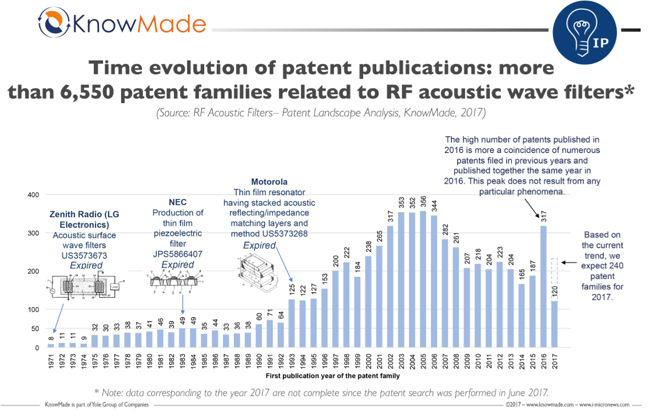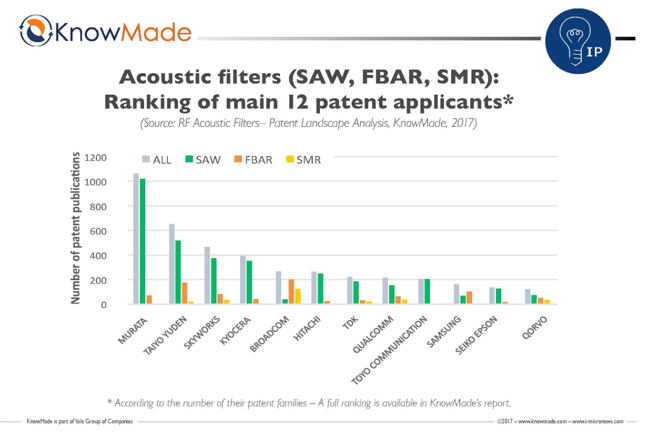For many years RF power amplifiers were the key device in the RF handset front end that limited performance and demanded the most attention and investment. After a proliferation of frequency bands over the years from 2G to 4G, the RF filters are now the key component that demands the most attention limiting performance in many cases. RF surface acoustic wave (SAW) and bulk acoustic wave (BAW) filters are typically best suited for handsets in the <6 GHz frequency ranges and are widely used in handsets. Some frequency bands have become so close to each other that although SAW/BAW filters might work at room temperature, the slight drift with a normal environmental change in temperature will make them out of specification. So now temperature compensated filters are being further developed and supplied into handsets.
Yole Developpment just reported that between 2017 and 2022, an 8% CAGR is expected for acoustic wave filters. The market is dominated by historical players with a strong international position that has a big barrier to entry. They also reported that acoustic wave filter patenting activity was very high between 2000 and 2006 but since then, it has progressively decreasing reaching a plateau in 2010.
The IP landscape is showing the same evolution, dominated by a limited number of large companies including Broadcom, Skyworks, Taiyo Yuden, Murata and others. The numerous recent mergers have led to the strengthening of player’s portfolios. Broadcom’s acquisition by Avago Technologies is one good example. While Qorvo had it own acoustic wave filter technology through TriQuint’s merger with Sawtek, Skyworks teamed up with Panasonic to develop their supply and bought out the joint venture.
Yole Developpment also reported that BAW patenting activity is more dynamic compared to SAW market segment. Broadcom has the strongest portfolio also consolidated thanks to its acquisition by Avago Technologies. BAW IP landscape is less established than SAW one and KnowMade’s analysts expect a reshaping of this market segment during the next 5 years due to the race between the main IP challengers. For example both companies, Qualcomm and Qorvo are showing interesting IP activities focused on the 4G to 5G transition. This strategy will probably reshuffle the BAW IP landscape and enhance the competition. SAW/BAW filters continue to be a key device in the handset with the ever increasing number of frequency bands each year.



